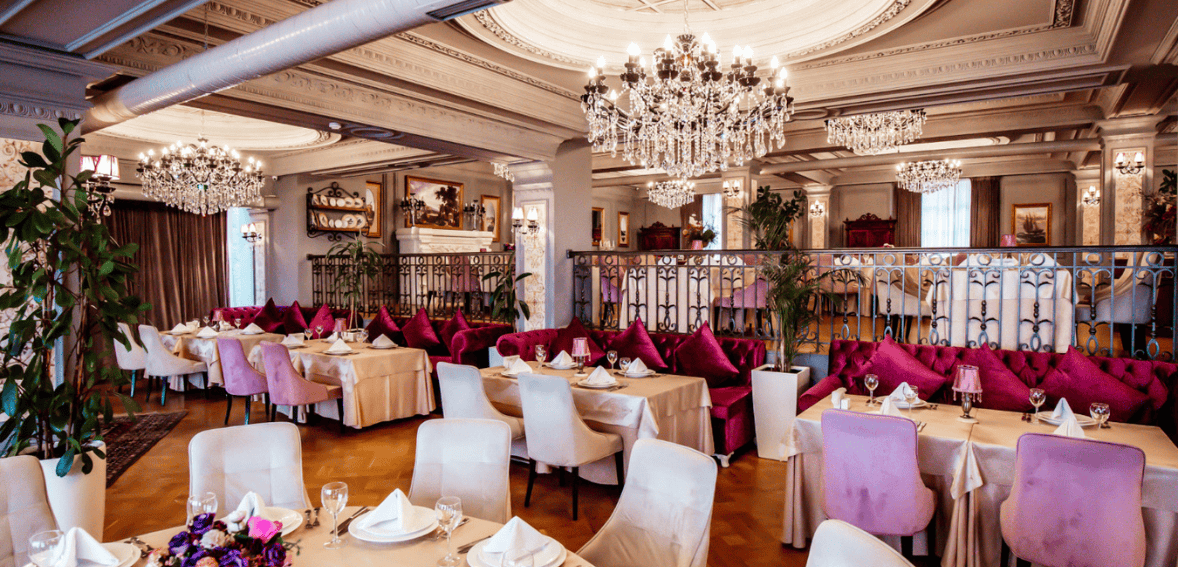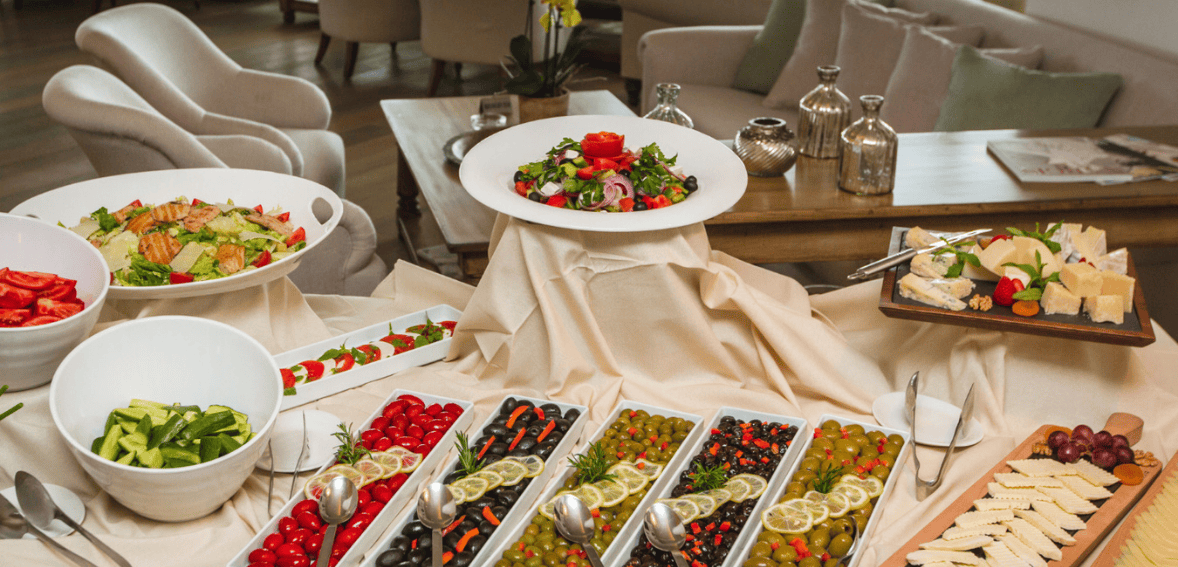
By Jermaine Thomas August 13, 2025
Budget catering often begins with big dreams but limited resources. Clients typically envision delicious food, flawless service, and a visually stunning setup; all at a price that may not align with reality. While their enthusiasm is understandable, they often underestimate the costs and logistics required to bring that vision to life. For caterers, this presents a unique challenge: how to meet high expectations while working within financial constraints, without compromising on professionalism, quality, or service standards.
The key to overcoming this challenge lies in honest communication, thorough planning, and transparency from the very beginning. Taking time to educate clients early in the process about pricing structures, menu options, staffing needs, and logistical requirements can set a realistic tone and foster mutual trust. Rather than simply saying “no” to certain requests, offering creative alternatives within the given budget helps clients feel supported and included in the decision-making process.
When clients have a clear understanding of what is achievable with their budget, they’re more likely to be satisfied with the outcome. This reduces last-minute stress and ensures a smoother, more enjoyable event. Ultimately, the cornerstone of a successful catering experience is not only great food; it’s also a shared understanding and a collaborative approach.
The Importance of Setting Expectations Early
Many clients approach caterers with a vision but without a clear sense of what that vision might cost. Early conversations often include phrases like “simple but elegant” or “budget-friendly but impressive.” These broad terms can mean very different things to different people. That’s why the first step in any catering consultation should be about defining expectations clearly and anchoring them in reality.
Caterers need to ask targeted questions that bring specificity to vague requests. What kind of food is the client imagining? Is it plated, buffet, or passed appetizers? How many guests are expected? What’s the venue like? These details help determine whether a request is doable within the client’s budget.
Clients are often unaware of hidden costs like staffing, rentals, travel, taxes, or last-minute changes. Transparent pricing discussions help prevent frustration later. If expectations are set properly in the beginning, the entire planning process flows more smoothly and leads to better collaboration. A successful client budget planning conversation will feel like a partnership rather than a transaction.
Demystifying the Cost of Catering Services
Catering isn’t just about the food – it’s about the whole experience. Clients think in terms of grocery store prices, not realizing all the components and people involved in bringing their event to life. From chef labor and service staff to transportation, licensing, kitchen prep, cleanup and equipment rentals, there are many factors that go into the final cost.
During the catering consultation it’s helpful to break down these components into simple language. For example, explaining that staff wages for a 6 hour event include hours of prep, travel and cleanup helps clients understand they are paying for more than what they see during the event. Similarly, clients should be made aware that some menu items can be labor intensive even if the ingredients are cheap.
Clients may not realize smaller events are not always cheaper. There are fixed costs that remain the same regardless of guest count. By being transparent early on, caterers can build trust. Catering expectation management starts with financial transparency and honest conversation about what each element costs and why.

The Role of Menu Planning in Budget Catering Control
Menu design plays a huge role in balancing client desires with available budget. It’s often the first place where realistic adjustments need to be made. A smart caterer will use the menu as a tool for client budget planning, offering variations that maintain flavor and presentation while adjusting for affordability.
Instead of saying no to a client’s idea, suggest alternatives. For instance, if filet mignon is too expensive, a well-prepared flank steak might deliver a similar experience. Seasonal ingredients are usually more affordable and fresher, making them a win-win for the client and the caterer. Buffet-style setups can be more cost-effective than plated service, especially for larger groups.
It’s important to communicate that creativity does not always require a high price tag. With the right techniques, modest ingredients can shine. During the catering consultation, present a few example menus across different price ranges. This gives clients a visual sense of what their money can buy, and helps shift their focus from specific ingredients to overall guest experience.
While clients often focus on the menu, non-food costs can make up a significant portion of the catering bill. These include rentals like chairs, linens, tableware, and heating equipment, along with staff costs, venue fees, permits, and transportation charges. Clients who are unaware of these expenses may feel blindsided later, which can strain the working relationship.
A thorough catering expectations management strategy involves introducing all these potential costs early. If certain elements; like high-end glassware or custom lighting; aren’t essential to the event’s success, clients can make informed decisions to cut or replace them. Conversely, if clients want a polished and elegant experience, they need to understand the associated costs and plan accordingly.
Including a detailed estimate in the early stages of planning allows clients to prioritize their spending. This clarity empowers them to feel in control of their event rather than surprised or overwhelmed by extra charges later. Caterers can guide clients in choosing options that deliver visual and functional impact without unnecessary expense.
Using Visual Aids to Explain Options
Sometimes numbers just don’t do it. Clients need to see the difference between a premium, mid-range and budget setup in a visual form. Pictures from past events, sample setups or even mock table layouts during a catering consultation can help illustrate what each level of service looks like.
When clients can see a $50 per head event next to a $100 per head setup, they can better understand what they’re getting. Visuals prevent misunderstandings. If a client expects upscale plating and décor on a tight budget, showing them what’s possible within their budget range will prevent disappointment.
Providing tangible examples opens up the conversation. Clients may choose to allocate their budget differently after seeing what each option looks like. Maybe they’re willing to sacrifice dessert for better mains or cut cocktail hour to upgrade the presentation. These are the kinds of trade-offs that are good client budgeting and it all starts with visual education.
Building Trust Through Transparent Communication
At the core of any successful client relationship is trust. In catering, where emotions and expectations run high, this trust can make or break the event. Being upfront about limitations and possibilities is a key part of catering expectations management. Clients don’t expect miracles; they expect honesty.
Avoid over-promising just to win the business. It’s better to under-promise and over-deliver. When caterers are honest about what’s feasible within a given budget, they avoid creating false expectations. Clients will appreciate the clarity and are more likely to recommend the service to others.
Additionally, putting everything in writing helps reinforce what has been agreed upon. After each catering consultation, send a follow-up email summarizing the menu, estimated costs, and services included. This reduces misunderstandings and gives both parties something to refer back to. Consistent communication throughout the planning process builds confidence and ensures smoother execution.
Offering Tiered Packages to Simplify Choices
Clients often feel overwhelmed when faced with too many options. One way to ease their decision-making process is by offering tiered packages. These can be structured by price per guest or by service level; basic, standard, and premium. Clear distinctions between packages make client budget planning much easier.
For example, a basic package might include a buffet with disposable tableware and minimal staff, while a premium option includes plated meals, professional servers, and full table settings. Each tier should be accompanied by a sample menu and list of inclusions. This approach helps clients match their expectations to their spending capacity.
Tiered packages also speed up the decision-making process. Instead of starting from scratch, clients have a starting point for customization. They can see what is possible at each level and choose the one that best fits their needs. This structure reduces the back-and-forth and makes catering consultation more efficient and productive.

Clients often compare caterers based on price alone, without realising what separates a seasoned pro from a budget operator. Part of catering expectations management is educating clients on what they are actually paying for. Beyond food, they are paying for experience, reliability and peace of mind.
A good catering team brings coordination, timing and troubleshooting skills to ensure events run smoothly. Cheaper services may compromise on quality, punctuality or safety standards. Sharing stories or case studies during a catering consultation can help illustrate this point without sounding too self promotional.
Clients should know that a professional team is not just cooking and serving – they’re managing logistics, food safety and handling last minute surprises with calm efficiency. By explaining the full scope of service, caterers help clients see the bigger picture beyond just the food. This makes the pricing feel more justified and fair.
Encouraging Flexibility and Prioritization
It’s rare for a client’s ideal plan to align perfectly with their budget. In such cases, the goal should be to help clients make informed trade-offs. Whether it’s reducing the number of courses, shifting service style, or modifying presentation, small adjustments can lead to significant savings without lowering quality too much.
During client budget planning, ask clients to identify their top priorities. Is it the food variety, the service style, the guest experience, or the visual setup? Once the must-haves are identified, other components can be scaled back. This process of guided flexibility ensures that the event still feels personal and intentional.
Flexibility should be framed positively. Instead of saying what the client “can’t” have, the conversation should focus on what they “can” achieve with available resources. Caterers who approach the process collaboratively make clients feel heard and respected, even when compromises are necessary.
Handling Last-Minute Changes Gracefully
Even with the best planning, last minute changes happen in catering. Guest numbers go up, venue logistics change or clients want last minute menu changes. A big part of catering expectation management is helping clients understand how these changes impact cost and prep.
During the initial discussion, set clear timelines and cut off points for changes. Explain how late changes will incur extra costs due to last minute sourcing, overtime for staff or reprinting menus. By outlining these potential issues upfront, you prevent misunderstandings and have more control over the event flow.
A flexible but firm approach is best. Let clients know you’re happy to adapt but there are boundaries for operational reasons. Transparency around change policies means everyone is on the same page and reduces the chance of conflict on the day. It also reinforces the professionalism of the catering consultation process.
Conclusion
Setting realistic expectations in budget catering is both an art and a discipline. Through effective catering consultation, clear communication, and proactive client budget planning, caterers can align client dreams with practical solutions. The key is to foster mutual understanding, offer honest guidance, and provide visual and structural tools that help clients make confident decisions. When clients understand where their money is going and feel empowered in the planning process, they are more likely to be satisfied with the outcome. Great catering is not just about food; it’s about trust, transparency, and teamwork. By focusing on thoughtful catering expectations management, caterers set the stage not only for successful events but for long-term client relationships built on clarity and respect.